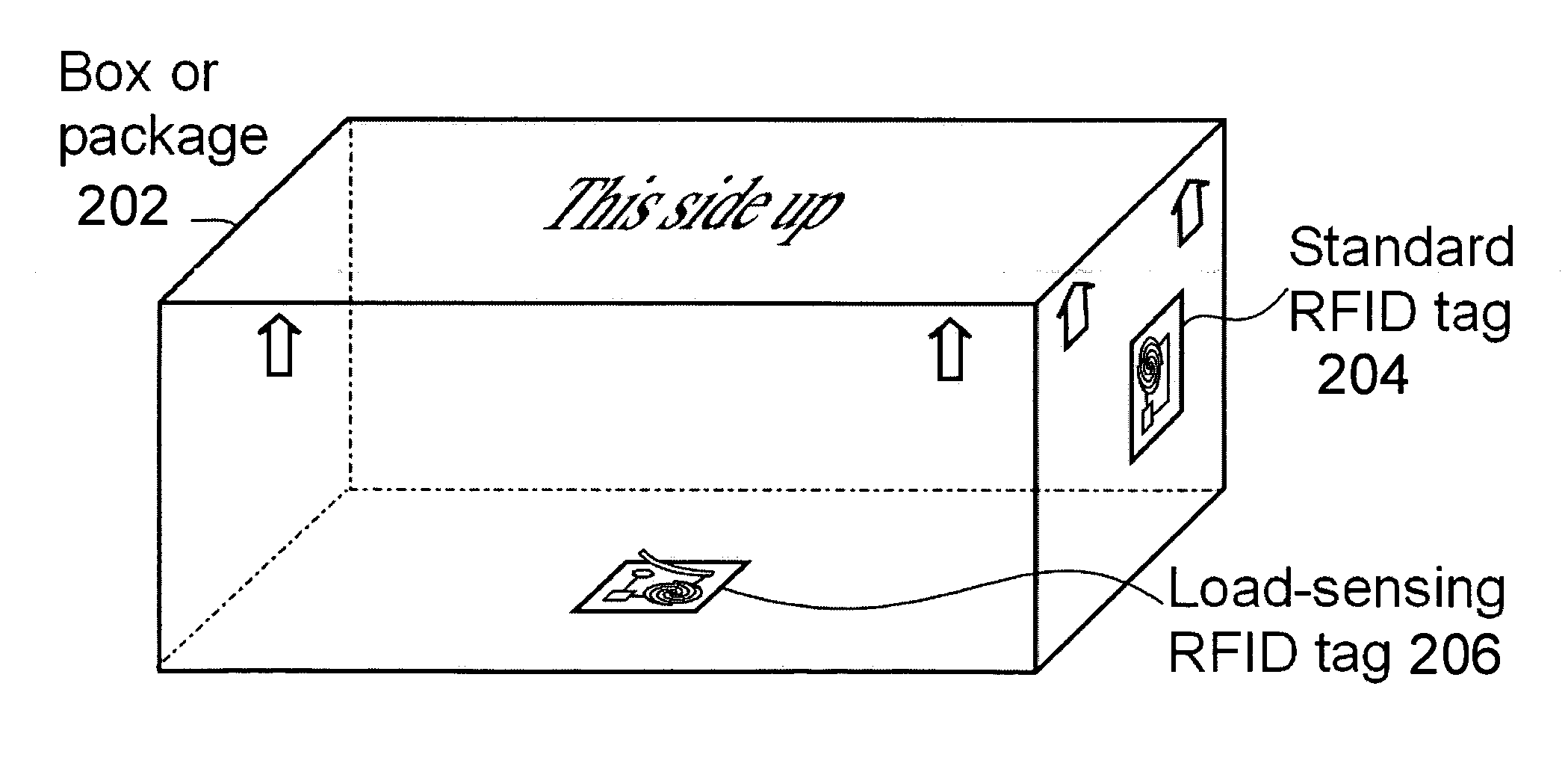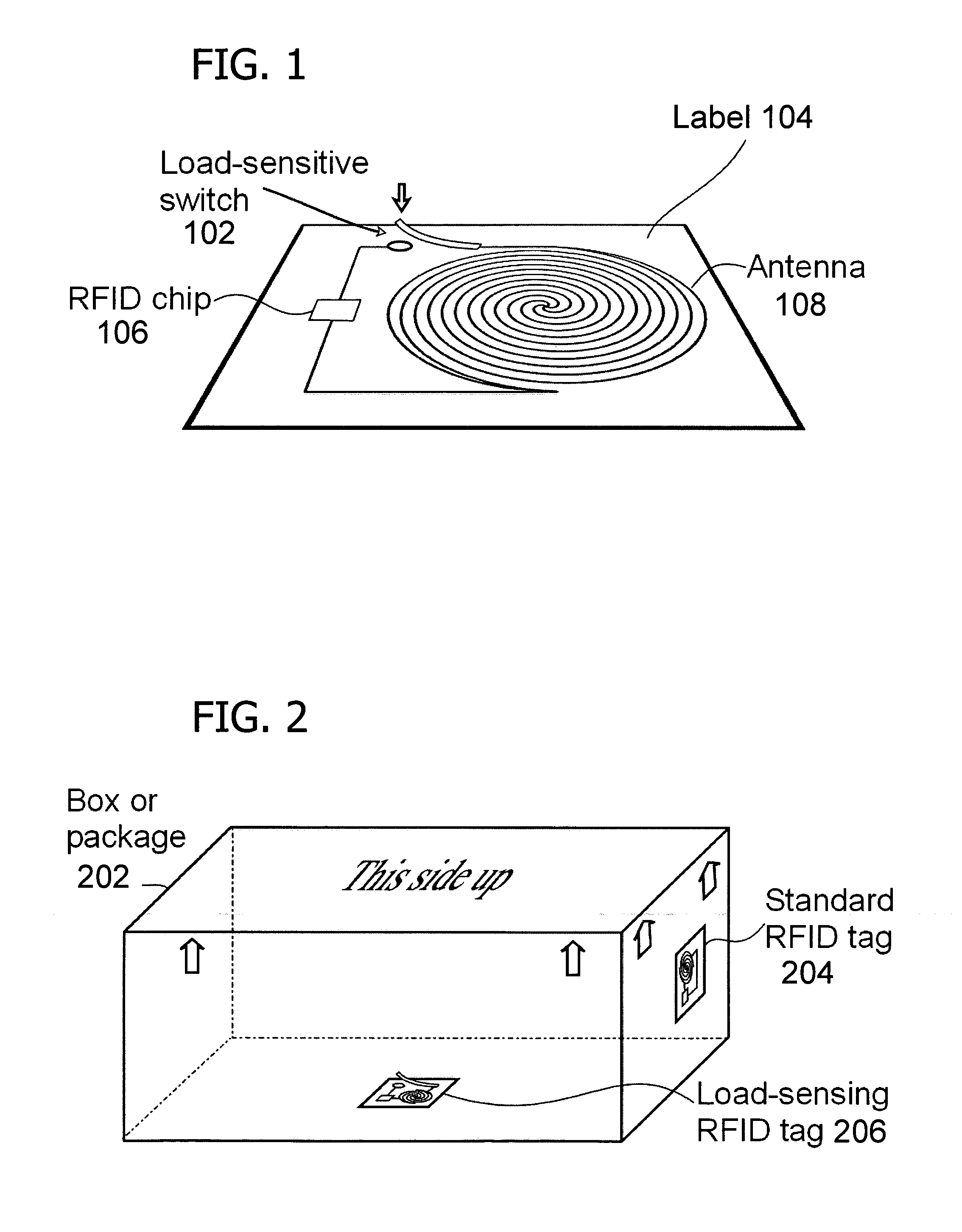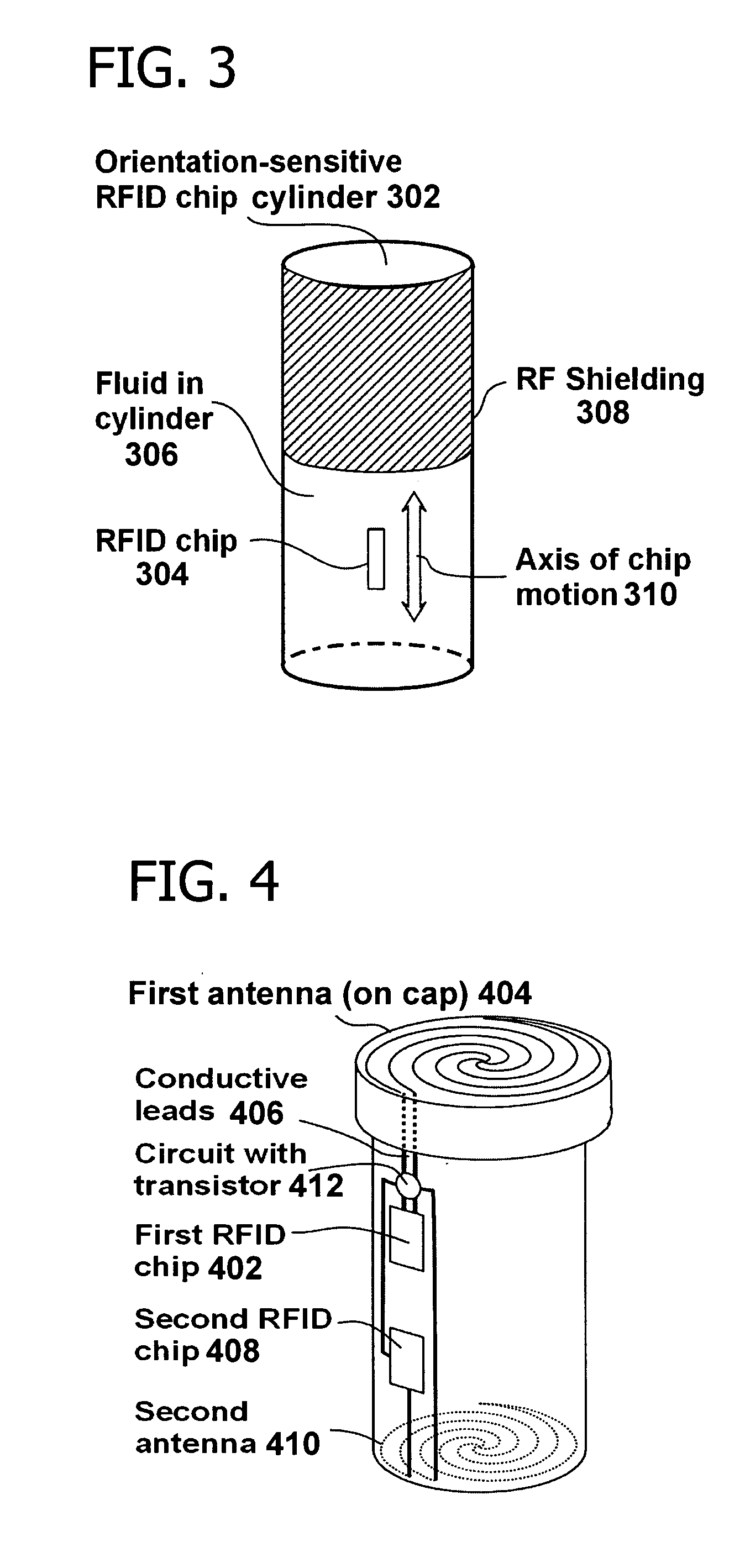Activating a data tag by load or orientation or user control
a data tag and load technology, applied in the field of radio frequency identification (rfid) tags, can solve the problems of consumer privacy, delay in several efforts to implement rfid, and existing systems that do not use rfid tags to ensure the proper loading
- Summary
- Abstract
- Description
- Claims
- Application Information
AI Technical Summary
Benefits of technology
Problems solved by technology
Method used
Image
Examples
Embodiment Construction
[0022] In one embodiment, the invention includes mechanically activating or deactivating a radio frequency identification (RFID) tag by load or orientation or user control. In particular, the invention includes a load-sensitive RFID circuit such as illustrated in FIG. 1 and FIG. 2, an orientation-sensitive RFID chip container such as illustrated in FIG. 3, a tamper-evident container with two RFID chips such as illustrated in FIG. 4, and an RFID tag with a removable antenna such as illustrated in FIG. 5. RFID chips may also be cooperatively associated with non-contacting removable antennas that provide energy via inductive coupling or resonance, as shown in FIG. 6.
Radio Frequency Identification (RFID)
[0023] RFID smart tag technology is known and understood by those skilled in the art, and a detailed explanation thereof is not necessary for purposes of describing the method and system according to the present invention. With RFID or other smart tag technology, a vendor may associat...
PUM
 Login to View More
Login to View More Abstract
Description
Claims
Application Information
 Login to View More
Login to View More - R&D
- Intellectual Property
- Life Sciences
- Materials
- Tech Scout
- Unparalleled Data Quality
- Higher Quality Content
- 60% Fewer Hallucinations
Browse by: Latest US Patents, China's latest patents, Technical Efficacy Thesaurus, Application Domain, Technology Topic, Popular Technical Reports.
© 2025 PatSnap. All rights reserved.Legal|Privacy policy|Modern Slavery Act Transparency Statement|Sitemap|About US| Contact US: help@patsnap.com



